Ancient Salona Research: Sensational New Archaeological Discoveries
February 25, 2023 - The latest discoveries in Salona, an ancient city near Split, show that the site is almost a third larger than previously known and confirm that ancient Salona was a large city in an extremely important strategic position of the Roman Empire. The value of these discoveries is sensational, according to the conservators.
"These discoveries and their presentation will soon become a great archaeological sensation like the world-famous Aquileia and Pompeii and will have a significant share in the economic development of the city of Solin," Radoslav Buzancic, head of the Conservation Department in Split, said for Hina, as reported by Poslovni.
The presentation of the ancient Salona will be developed through the generations and long into the future, he said, noting that some newly discovered finds, such as mosaics, will be presented in the Cultural Centre. "It is not one project, but many projects with the same goal, financed from different sources," Buzancic pointed out, adding that "the process of the physical presentation of the ancient Salon in the city and outside it is related to future research and spatial planning policies of the city, which the Ministry of Culture and Media has always supported."
The latest research carried out south of Gospin Otok on the left bank of the river Jadro revealed parts of the city ramparts that give a new image of ancient Salona and show that the city was larger than previously thought. These ramparts, Buzancic explains, stretch south of Gradina to Marko Marulic Street, from where they turn west to Sirina.
The analysis of archaeological research has established, he emphasizes, that Gospin Otok, as well as the entire part of the city to Maruliceva Street, was located inside Salona. In archeological research on Sirina, walls that we know from 19th-century blueprints were found, towers that were not drawn at the time, and economic complexes of buildings within those walls.
The new findings shed an entirely new light on ancient Salona
New finds, not only the ramparts of the southern part of the city, but the sensational finds of monumental buildings and infrastructure, as well as the finds of stone sculptures and sculptures found in these investigations, shed a completely new light on ancient Salona, Buzancic points out.
Among them, he singles out "the imperial building with mosaics between the post office and the monastery of the Sisters of the Handmaids of Little Jesus, the ancient road with a huge canal opposite the same monastery, the large thermal baths that have only been partially explored on the stretch from Tuđmanova Street to the City Administration building, as well as the southern gate of the city which are located under the road in Petra Kresimira IV Street, together with the previously found channel and bridge north of Tudmanova street."
Salona, Buzancic explains, is a huge Roman city with Illyrian and Greek roots. It was the port of Delmata until the age of Augustus. It began to develop as an important urban center of Illyricum, with new walls and monumental gates, a forum, and temples erected.
The Flavian dynasty left a memory of its rule in the vast arena built west of the old city. In the time of Marcus Aurelius, in the middle of the 2nd century AD, the city, walled with ramparts and towers, reached the size of what, Buzancic notes, was considered the ancient Salona until recently.
"It was a significant city in an important strategic position, the center of Illyria, which was destroyed and rebuilt many times because of this. It flourished in the period from the creation of the Roman Empire to the Gothic Wars, was rebuilt into a large and important late antique center, with the seat of a huge archdiocese that reached to the Sava and the Danube to the north, destroyed by the invasion of the Avars and left to the Croats, who built the center on the ruins of Salona his medieval state", he explains.
Salona, Buzancic points out, has great importance for Croatian history and statehood, as well as an educational character that brings knowledge of such an important ancient center of the Mediterranean. According to him, it is also a huge Christian archaeological site with a history that goes back to the apostolic times.
Ancient Salona research will continue
The latest discoveries in Salona are the work of the skill and expertise of Croatian conservators. According to Buzancic, who were never behind the Italian ones, Salona was better protected than the famous Pompeii, which experienced great devastation a few years ago when entire parts of attractive ancient buildings collapsed.
"In the past, the buildings in Salona were destroyed so that the enemy army would not use them as fortifications, but the construction was still so solid that despite all that, it was not completely destroyed," explains Buzancic .
He adds that parts of the architecture partially preserved as ruins were once extremely sensitive to earthquakes. "This can be a great danger, especially if it is a question of slender columns on which parts of a massive structure are located," warns Buzancic.
In Solin, there have been protective archaeological investigations for years, which, he reminds, necessarily precede construction works and are financed by the Investor. Systematic archaeological research in Salona is financed from the state budget and EU funds, and some research is co-financed by the City of Solin.
Salona's research will continue. Thus, the insights into the ancient past of the current Solin region will continue to expand. The discoveries bridge the almost two-millennium time gap between the current Solin and the former Salona, a fortress of the Roman Empire in Dalmatia. The exciting archaeological story of Salona turns into a promising magnet for visitors.
For more, make sure to check out our dedicated Travel section.
Archaeological Discovery: Ancient Salona Ramparts Uncovered
January 7, 2022 - Under the layers of earth, vegetation, and garbage, well-preserved ancient Salona ramparts have been discovered.
No one has recently passed Porta Caesarea, the eastern and oldest city gate on the way to the amphitheater, without being surprised by the discovered northern ramparts of Salona, the former metropolis of Roman Dalmatia, reports Slobodna Dalmacija.
Under the layers of earth, vegetation, and garbage, one of the best-preserved parts of the Salonitan rampart, "70 meters long" and "120 meters" in length, has been revived.
This research project began in mid-November last year. It will continue in the next period as there is excellent potential for discoveries and new knowledge about life in ancient Salona.
"This is a continuation of the successful cooperation between the Department of Archeology of the Faculty of Philosophy in Zagreb and the Archaeological Museum in Split, which has been going on for four years now.
The research on these northern ramparts is part of the project "New Lives of Ancient Inscriptions: Epigraphic Spoli in Central Dalmatia", which deals with re-used ancient inscriptions funded by the Croatian Science Foundation. Our goal is to explore this and find ancient inscriptions within that research because we know that they were used extensively in the construction of Salona's defensive walls.
This has been confirmed many times so far because, for the two hundred years that Salona has been researched, there have always been inscriptions that ended up in the ramparts as a building material," explains Dino Demicheli, associate professor at the Department of Archeology and project leader.
"With this campaign, we wanted to discover and present the best-preserved section of the ramparts that can be visually experienced in Salona. It is this move east of the amphitheater, along the northern ramparts.
We knew that there were ramparts and towers here. Still, they were so covered with stones, vegetation, earth, that this view simply could not be experienced, unlike what you can see after three weeks of research," Demicheli explains what they have discovered.
"These towers, which are numbered from 15 to 18 in professional literature, can now be seen very nicely, and our goal is to preserve them as soon as possible, protect them from collapsing and, of course, present them," says the expert, explaining how the construction of this ring of ramparts began in 170 AD, but how the defensive walls were constantly repaired or upgraded after that.
"Here, you can see the ramparts, towers, and these triangular protrusions that were upgraded only in late antiquity; it is the latest phase of construction, the fifth and sixth centuries AD.
All four towers are different in appearance, construction, and size. Nevertheless, these are really impressive remains, and even when you imagine that these towers went another five to six meters in height, you can imagine what the Roman defense system looked like at that time," he adds, emphasizing that it is essential that they confirmed the project goal and found more than 30 epigraphic monuments, i.e., exteriors.
"We have established that epigraphic monuments were used for this extension of the ramparts and that they were mercilessly inserted as construction material from the surrounding area.
These are ancient tombstones, more or less dating between the first and third centuries, and were installed, we assume, during the fourth and fifth centuries.
The ramparts are currently the greatest epigraphic resource in Salona; we find so many of them here that it is fascinating. All the necropolises were outside the city, and the ramparts were being built right on the border between the "living" city and the pagan necropolis outside Salona, which were in some way deconstructed and inserted into the ramparts.
So, in a way, they have been preserved thanks to that," Demicheli points out, saying that they found some fascinating inscriptions.
One of them is an inscription mentioning Vital. He was one of the slaves who took care of the affairs of some very well-to-do Romans.
"At the same time, the archeological research of one of the towers began. By the way, we are now in its lower layers, while the operable part of the tower and ramparts was much higher above us.
We were amazed that along with amphorae and tegulas, we found a lot of ceramics, especially tableware, and increasingly finer pieces. However, now all this needs to be cleaned, washed, determined and defined by century.
We are only in the first layer, so who knows what is down there," says the project manager and points out that it will take time for all this to be methodologically arranged.
Deputy Head of Research Ema Višić Ljubić, senior curator of the Archaeological Museum in Split, emphasizes the importance of cooperating with the Zagreb Department of Archeology and their students. It all started in 2018 with the research of the building with the Episcopal Center and continued with the protective research of the Gradina fortress.
With all the above and current research, we discover new buildings and gain insights about Salona. Most of the knowledge that our predecessors left us in professional literature has been confirmed, and it is incredibly fascinating how many tombstones we have found.
We are delighted because this opens a new story about Salona; we learn a lot about its population and life in it. Nearby is the early Christian site of Kapljuč, which previously had the stage of a pagan cemetery, so a lot of material was built into the ramparts from that site.
Indeed, this complements our knowledge of Salona we have inherited since the beginning of our research," says Višić Ljubić. The project included research associate Ana Demicheli and the Archaeological Museum and senior curator Jagoda Mardešić and Nino Švonja, curator of the epigraphic collection.
"This is the longest stretch of the ramparts that can now be seen from the outside, so only here can the visitor experience the defensive power of Salona with all these towers that are especially dense on the north side of the walls," adds archaeologist Mardešić.
"Mostly there is still work to be done on conservation, on partial reconstruction, but we are very pleased that we have started this process," Mardešić points out.
The importance of the entire campaign is confirmed by Dr. Ante Jurčević, director of the Archaeological Museum.
"The arrangement of the ancient northwestern ramparts began at the end of 2020, removing vegetation but also large debris, mostly of asbestos origin, which was dumped next to the towers in large quantities. Since the towers are next to the central communication, i.e., the road, it was convenient for people to throw garbage there.
After these works, research began, which included towers and cleaning the front walls, and the Archaeological Museum continued to clean the entire area to the amphitheater.
We cleaned about two hundred meters of low vegetation, removed most of the bulky waste from the surface of the towers and ramparts. Our goal is to present the rest of these towers that connect to the amphitheater in the same way by the end of 2022 so that this whole move from Kapljuč to the amphitheater is preserved and presented.
The northwestern ramparts are being arranged with the help of the Croatian Science Foundation, the Ministry of Culture, as well as our museum funds," says the director and announces that they plan to arrange an early Christian cemetery in the second phase of organizing and cleaning the Salona archeological site.
"We intend to conserve and finally arrange the tomb of St. Domnius, and then the Episcopal complex from which we want to remove long-standing accumulations of earth and stone that were formed during 50 years of research. This is followed by research, conservation, and site presentation.
Our goal in cooperation with the Croatian Restoration Institute is to arrange the western necropolis, i.e., the part that is currently underwater, as well as the part of the western ramparts that are also overgrown and are located near the entrance to the INA plant in Sveti Kajo," the director announces numerous projects for an even better presentation of these inexhaustible archeological treasures.
Everyone is incredibly proud that this cooperation with the Faculty of Philosophy in Zagreb revived the student fields that existed in the 60s and 70s when archaeologist Duje Rendić Miočević brought students who researched at Porta Caesarea.
Students of the Department of Archeology who participated in this research are Tomislav Kiš, Santa Duvnjak, Vinko Udiljak, Martin Sokolić, and Nera Janković, as well as two doctoral students on the project of the Croatian Science Foundation, Josip Parat and Krešimir Grbavac.
Everyone will continue to work in the field because their experiences in Salona are significant to them. They were supported by the City of Solin, the Tourist Board, and the Public Institution of Culture "Zvonimir".
"This field is fantastic for them; they, like all of us, are fascinated by the result because a lot has been achieved in a brief period, and what makes us happy are the reactions of people who walk through Salona every day. No man hasn’t stopped and said, 'Well folks, this is fantastic, we didn’t even know this was here!'
However, all this needs to be protected, that is, preserved, so we still have a lot of work to do," concludes Demicheli.
You can see photos and videos at Slobodna Dalmacija
To read more about lifestyle in Croatia, follow TCN's dedicated page.
Dalmatian Duo Revives Ancient Salona in 3D (PHOTOS)
April 18, 2021- Ever wonder how Salona looked all those years ago? One Dalmatian duo has revived ancient Salona in 3D!
Dalmatinski Portal reports that Dalmatian duo Stipan Ujdur from Opuzen and Frane Bilić from Zadar initiated the reconstruction of another Dalmatian Roman geolocation - ancient Salona. Ujdur creates the 3D models, video animation, VR, and photo rendering, while Bilić will program the final visualizations for multimedia in the 'MediaUp' studio.
"The project is very demanding, and it is difficult to do because Salona is large, but very little researched, so only the explored localities will be processed in the scenes. So far, five scenes have been made from a total of 12 to 14," Ujdur said.
"These scenes are more or less researched, so it is possible to model them in 3D format. I hope no one will blame me for some inaccuracies or copyright. Overall, it should be almost by the end of this year at the latest," Ujdur added.
Porta Caesarea was the monumental city gate of Salona. While Salona was still within the framework of the Urbs Vetus, this gate served as the eastern entrance to the city.
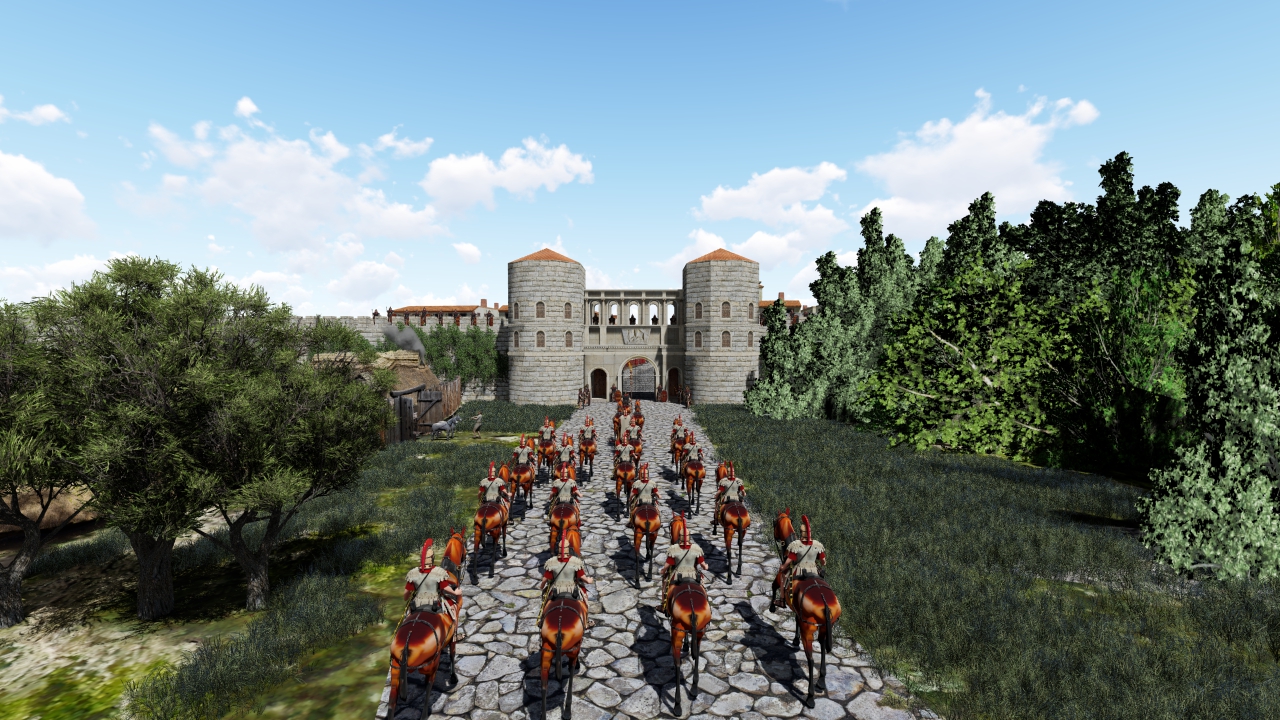
In front of them was a non-Romanesque settlement that depended on works in the city and the sale of agricultural products.
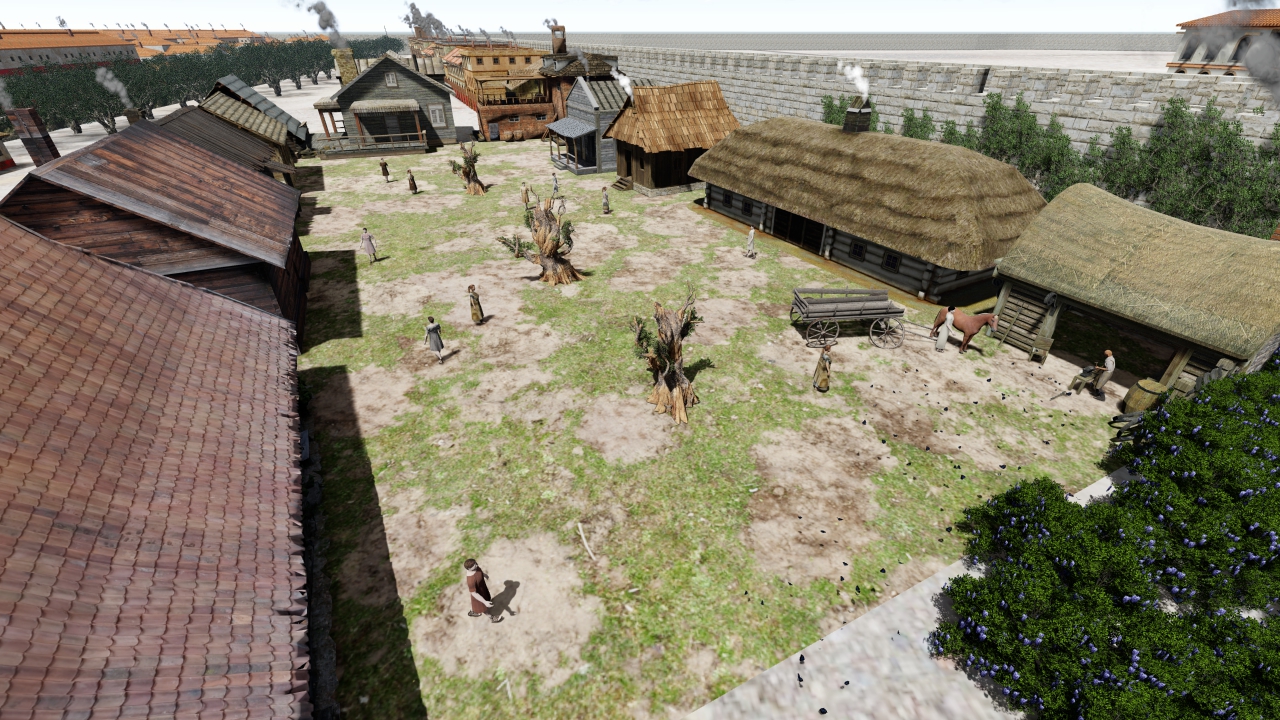
There were significant changes in front of the gates of Porto Caesarea and the ramparts. There are foundations for the city insula district; these are multi-story buildings built by the city for deserving citizens and social cases. They were usually 50 x 25 x 20 meters in size, with different variations in architecture, with public fountains for water and laundry.

On the left, in front of Porta Caesarea, a non-Roman settlement was evicted in front of Porta Andetria, and in their place, a settlement was built for workers in the "industrial zone."

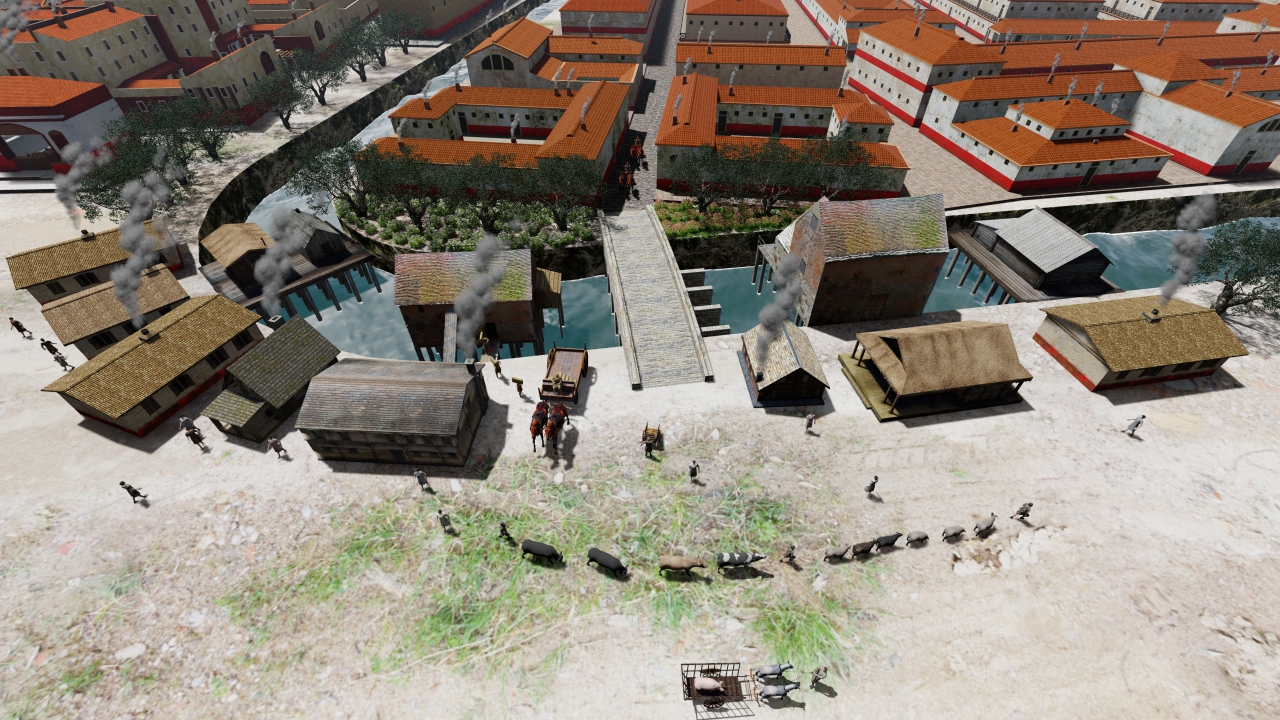
The industrial zone was near the bridge, and numerous workshops, warehouses, and dwellings were built for the workers who worked in them. There were also workshops on poles or with mills that exploited the water potential to power the machines.
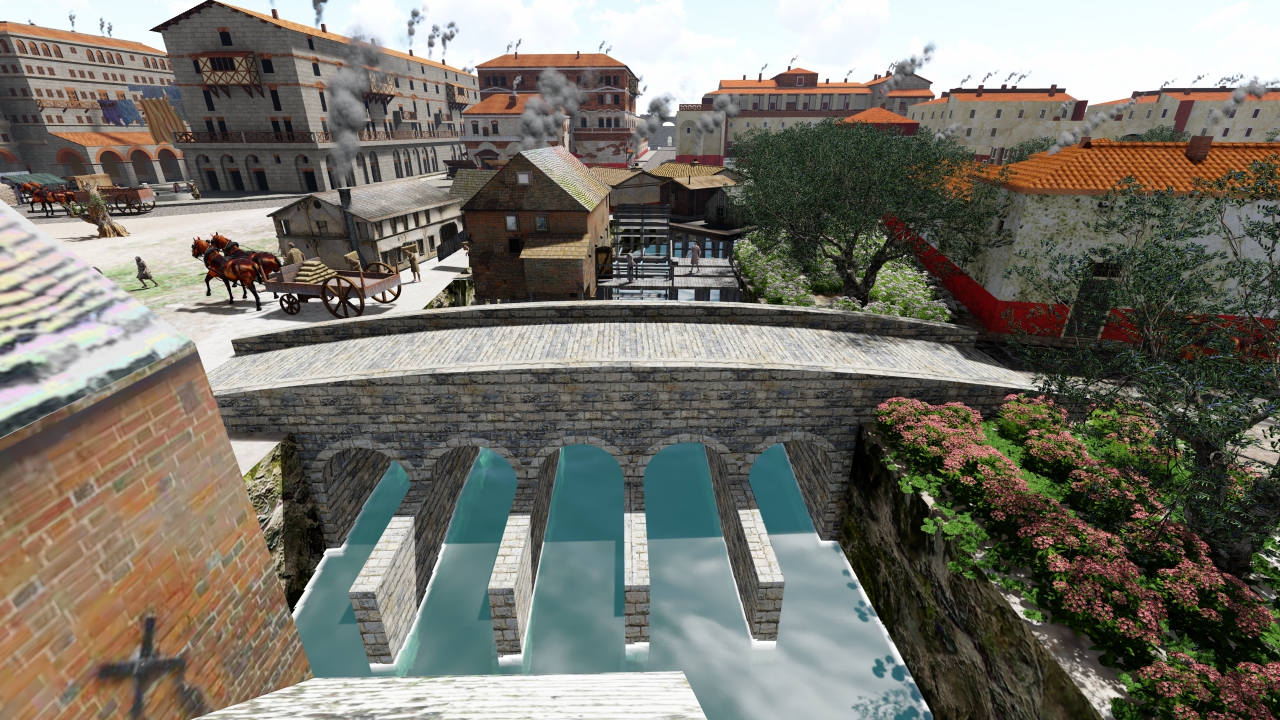
The peristyle was connected to all the rooms within the spa; this was most likely the atrium, while the building had a domus. As a rule, one entered the peristyle and from there into the frigidarium. Various bath aids were sold on the peristyle, from the latest baths to massage oils, various depilatory preparations, from razors to beeswax.
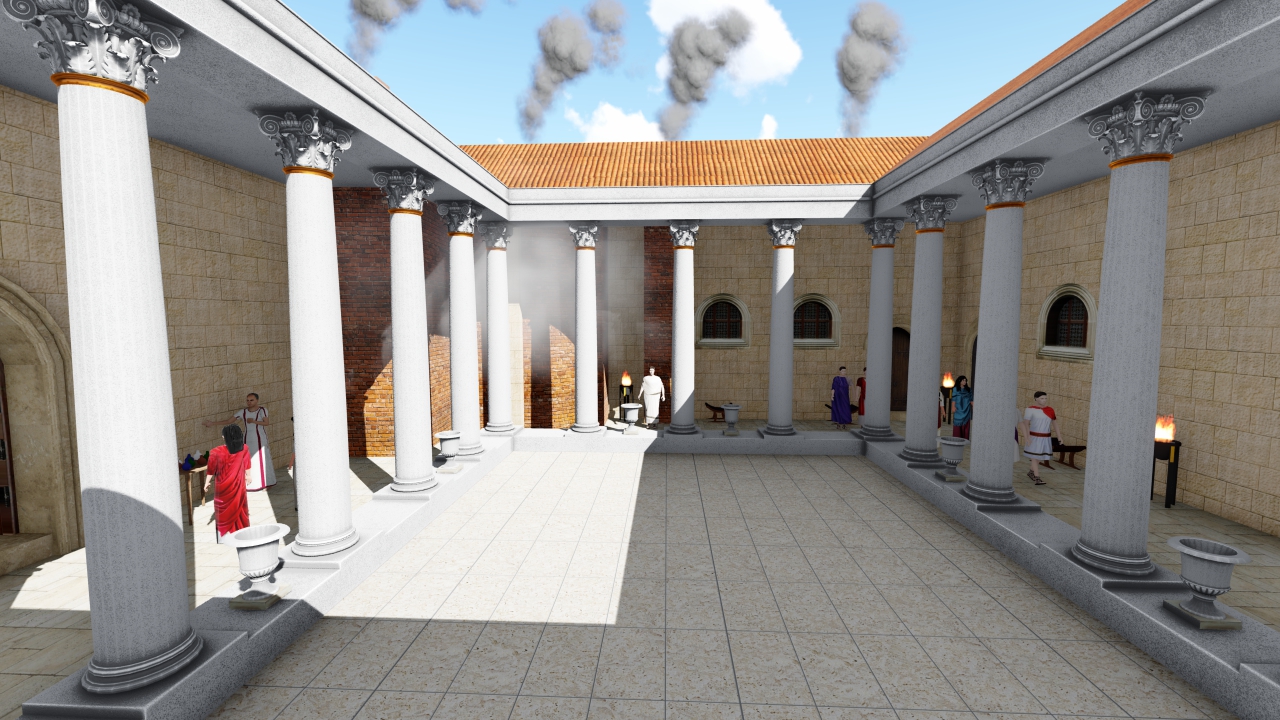
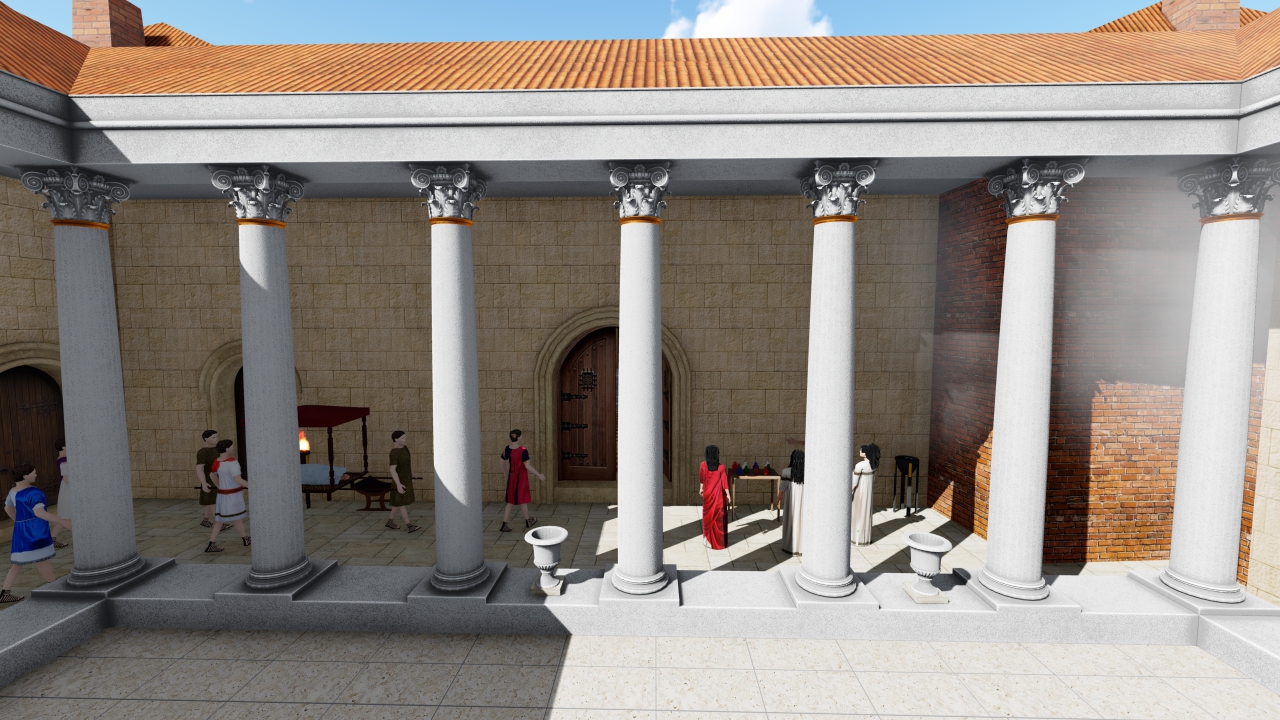
The frigidarium is a room with a pool where there is cold water, used before hot water and sauna, then at the end of all treatments to close the pores on the skin.

From the peristyle, one entered the frigidarium, from which one went to the left door to the locker room. After a bath in the cold pool, you'd go to the right door to the warm part of the spa. These baths were named 'balneum.'
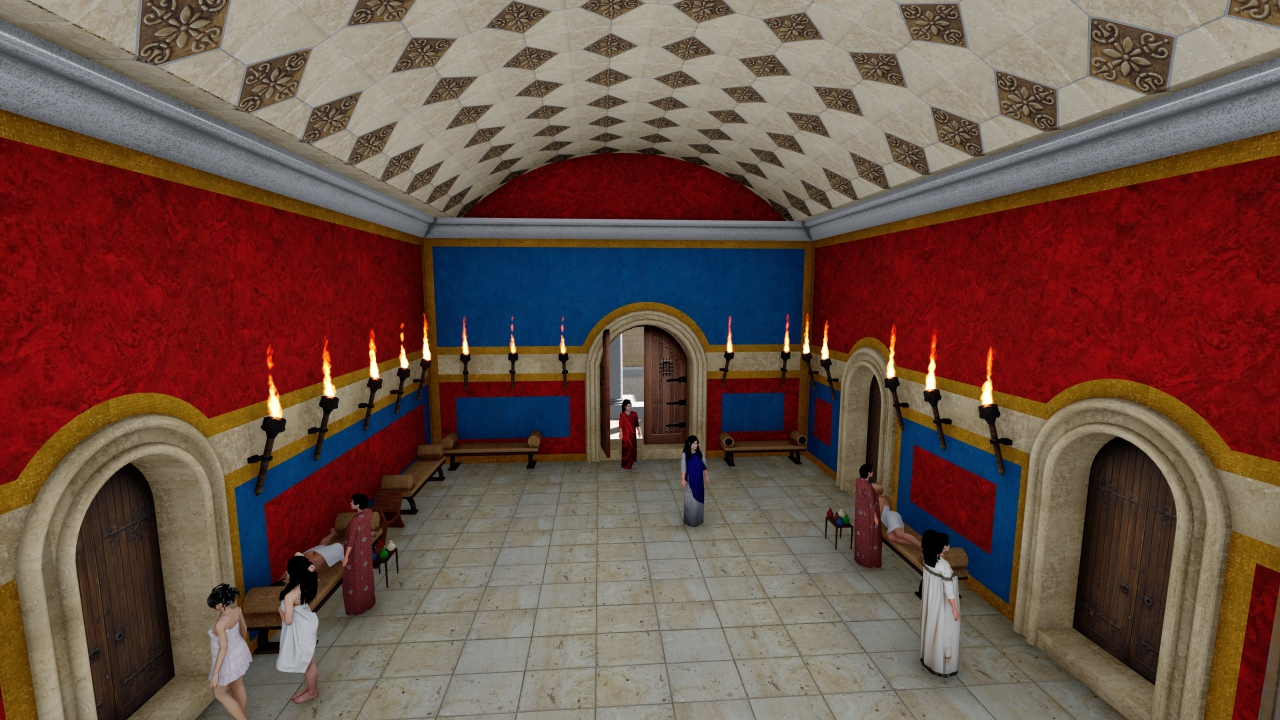
For more about lifestyle in Croatia, follow TCN's dedicated page.


